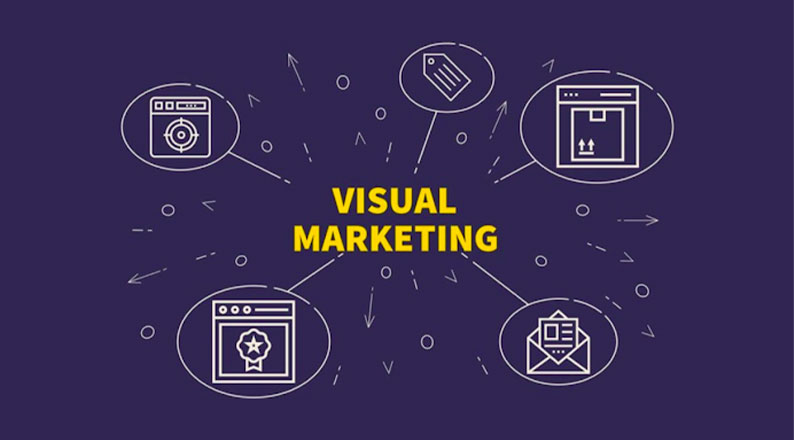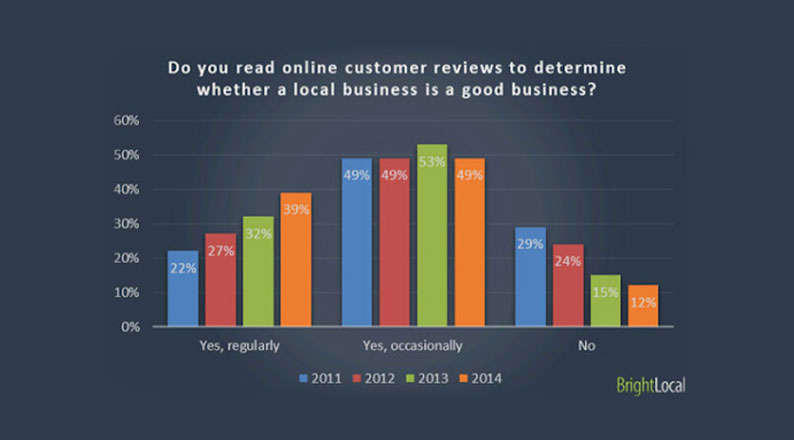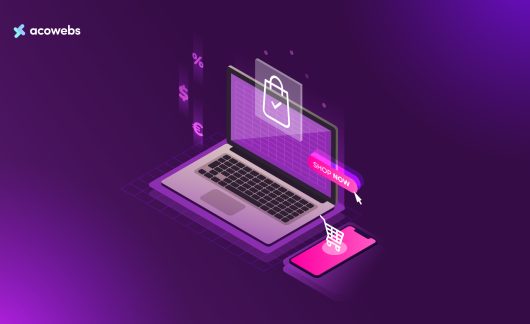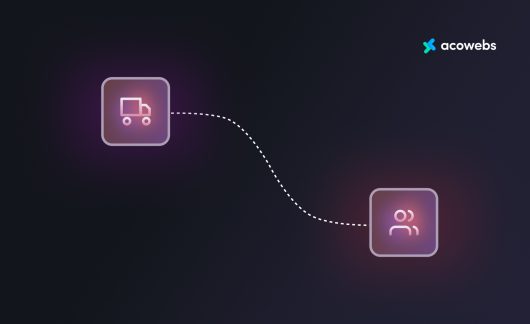Getting customers’ attention in an increasingly crowded and competitive digital market is a challenge. According to a Statista analysis, over 80% of people worldwide did their shopping online in 2020.
Statistics of Consumers That Shop Online – Image Credit: Statista
However, visual marketing in eCommerce has become the norm among digital marketers since it allows firms to enthrall audiences and grab their attention more effectively than traditional marketing strategies.
The rise of visual marketing has been a key element in successfully attracting audiences.
Consumer reviews, star ratings, and social proof are crucial for eCommerce marketers since user-generated content (UGC) is 50% more trusted than any other media.
Visual user-generated content is a variation of UGC (VUGC). Consumer-generated visual content, such as item tags on social media, video unboxing, and photo reviews, helps customers feel more empowered throughout the buying process.
The difficulties in gathering VUGC and maximizing its potential still exist, even though showing it is relatively intuitive. This article will discuss the importance of visual marketing, but first, let’s expound on the rise of visual marketing in eCommerce.
The Rise of Visual Marketing in eCommerce

Visual Marketing Concept – Image Credit: Shutterstock
Visual marketing in eCommerce refers to the use of visual appeal to promote the sale of a good or product. It covers the use of color and pattern across all platforms, including print, online, and on the product.
Online shoppers must rely mainly on product descriptions and excellent images because they cannot physically touch or view the products they purchase.
In addition to helping you convert more customers, the rise of visual marketing in eCommerce helps your audience understand your brand’s values.
Visual User-generated content, also known as consumer-generated content, is written and shared by consumers or users of social media, usually about brands or the goods or services they offer.
The user-generated content consists of all types of content that users have shared, including photographs, videos, ratings, reviews, gifs, audio, etc.
According to common belief, visual marketing in eCommerce is the most trustworthy, dependable, factual, realistic, and insightful information. As a result, it demonstrates a brand’s customers’ true worth and in-the-moment experiences.
All worldwide markets are experiencing a rapid expansion of the eCommerce ecosystem. For eCommerce brands, the prospects are also growing, but these brands still face significant challenges like brand equity, loyalty, cart abandonment, and conversions.
Consumers are becoming very selective when making purchases and seek out content that provides relevant information, credibility indicators, and authenticity.
Branded content isn’t reliable, impartial, or accurate; this is obvious. Here is how user-generated content affects purchasing experiences for e-commerce firms.
Importance of Visual Marketing in eCommerce
Power of Visual Content Concept – Image Credit: Shutterstock
According to research, 90% of consumers think user-generated material significantly impacts their purchasing decisions more than promoted sponsored content.
Similarly, two-thirds of users think the rise of visual marketing in eCommerce has contributed to a more reliable and genuine buying experience.
Here are eight importance of visual marketing in eCommerce;
1. Enhances Your Online Sales Conversions
The advantage of user-generated content is that it can be included in any level of the e-commerce sales funnel, including the awareness, consideration, and decision stages. UGC builds a seamless user experience to lead users to successful conversion.
Because UGC is the most dependable, authentic, and trustworthy material in the marketing ecosystem, it significantly impacts eCommerce conversions.
When making an online purchase, consumers search for indicators of trust. UGC excellently fills that need by presenting information about the goods and services from the perspective of genuine customers.
Consumers can learn about your brand’s trustworthiness and explore customer experiences by seeing user-generated material, reviews or images.
You can leverage user-generated material to inspire sales if you share it and it complements your brand. Buyers can even “shop the look” displayed in the UGC gallery by turning your UGC into a shoppable UGC gallery.
Nine out of ten poll respondents said that user-generated content influences their online purchase decisions.
The rise of visual marketing in eCommerce significantly impacts consumers’ purchasing choices. Any user-generated content, including reviews, ratings, photographs, and videos, can draw in and persuade the online retail audience to make purchases.
2. Increase User Engagement and Brand Recognition
Although increasing e-commerce conversions is the main objective, this won’t be feasible if users are unaware of you or don’t interact with your platform.
Brand awareness is the most crucial step in the consumer purchasing process. Your online store cannot convert visitors into paying clients if no one knows.
User-generated content is the ideal venue for spreading awareness of your online store. Social media is a hub for user-generated content (UGC).
Through user suggestions, customer reviews, and visually appealing UGC related to the business, many people discover items, raise awareness, and learn about new products and companies.
Increasing awareness encourages potential clients to interact with your brand. And since engagement is significantly associated with conversions, it is undoubtedly one of the main goals of the eCommerce marketing technique.
To make an accurate purchasing decision, consumers actively using an e-commerce platform seek to access information, compare options, and examine customer reviews.
In an attempt to maximize user engagement, your content must be current, unique, worthwhile, and genuine. All the above requirements are met by user-generated content.
Because prospective customers want to first learn about what other consumers have to say and their interactions, incorporating user-generated content with eCommerce is even more crucial to selling goods and services.
It is, therefore, crucial to include visual UGC to enhance user engagement on your eCommerce platform.
Orca, a wetsuit company that uses YouTube to promote its products, uses the platform to share swimming knowledge and advice with viewers. A great way to establish authority in their field while quietly integrating their products.
Orca Wetsuit Company – Image Credit: Orcasportswear
3. Improve the Shopping Experience for Customers
Whether they shop online or physically at a brick-and-mortar store, consumers place a high value on the experience. Potential clients may leave if there are any flaws or bad experiences.
However, delivering a seamless and thrilling purchasing experience online is extremely difficult since, unlike offline experiences, customer emotions cannot be analyzed.
A great way to create a distinctive online shopping experience is through user-generated content. For prospective buyers, user reviews on your e-commerce website offer a specific and quantifiable quality metric.
Will showing UGC galleries on an e-commerce site inspire customers who want to see how the item might seem in real life? How is it being used by other clients? The potential for that product, etc.
Skullcandy is an example of a brand that uses a unique content marketing approach. They focus on producing material with strong aesthetic appeal, subtly displaying products, and displaying concepts and experiences as part of their marketing approach.
Skullcandy Visual Marketing – Image Credit: Skullcandy
Rendering the UGC shoppable will also aid in converting user inspiration into sales. Customers can browse, assess, be inspired, and instantly purchase items without interruptions, making the purchasing process more fluid, quick, and enlightening.
4. Humanized As Opposed to Marketing
When marketing alone was sufficient to boost sales and profits, it was long gone. Nevertheless, as time passed, consumers also changed.
Consumers today can quickly tell the difference between genuine information exchange and branded advertising. Merchants must adopt a humanized strategy to boost authenticity and trustworthy information about their business and its products/services.
Unlike other types of material, consumer-generated content establishes a direct connection with the audience. Consumer-generated content, which consumers create, personifies a brand in the simplest yet most effective way.
However, In what ways can UGC make your eCommerce efforts more personable?
Current customers share user-generated material; therefore, UGC marketing will improve connections with prospective customers. They can quickly identify with other customers’ ideas.
Additionally, UGC aids in exposing a brand’s community to prospective customers. UGC can help your campaigns become more “HUMANE” by demonstrating improved relevance, humanized sentiments of current customers, and their actual experiences.
In other words, humanizing a brand increases its market worth and attracts more customers.
5. Builds the Library’s Content
An e-commerce platform’s most prominent aspect is content because it will engage and turn leads into customers. Your e-commerce platform’s content should be conceived and developed with customers in mind, not just for marketing goals.
The enormous work of creating content necessitates constant investments in research, materials, effort, and content creators. Additionally, producing content is a continuous process that costs consistently.
User-generated content is the ideal substitute for branded content. Users’ content is centralized on social media. You can quickly gather, curate, personalize, and post UGC on your e-commerce website using tools like Taggbox.
Taggbox User-generated Platform – Image Credit: Taggbox
Utilizing UGC lowers the cost of producing content for your eCommerce sites, such as product photographs and videos.
The UGC is like a constantly running stream that provides new, exciting, relevant content for your UGC initiatives.
You can create a UGC center for your campaigns by gathering great content. The best part is that UGC campaigns have a snowball effect that encourages more user-generated content for your company.
6. Boosts Brand Loyalty
Social proof is collecting pertinent and high-quality user-generated content from multiple social networks. Consumer credibility is evidence of a brand’s sincerity, dependability, and reliability.
Social proof, such as reviews, product photographs, selfies, and videos uploaded by users, is a powerful marketing tactic for expanding your clientele.
People will heed customer reviews rather than branded information. Additionally, it cultivates brand credibility among potential customers and retains devoted clients.
Brand loyalty is crucial in this cutthroat eCommerce environment. It increases the value of user-generated material beyond what it already is.
Customers who publicly promote your brand are considered to be brand lovers. These customers are more inclined to use your brand again.
Product reviews, customer endorsements, positive customer experiences, and product photographs or videos that highlight your brand’s excellent quality, affordability, and contented customers can all be found in the information posted by devoted fans.
This material draws in new clients and makes them want to be affiliated with your company. Creating an initial brand image and providing positive customer experiences promote brand loyalty, community building, and the highest possible customer lifetime value.
Encouraging the rise of visual marketing in eCommerce demonstrates a brand’s openness and faith in its customers. UGC encourages brand loyalty by revealing how much you appreciate your customers.
BareFaced, a skincare company, is one instance of a business that has successfully taken advantage of the rise of visual marketing in eCommerce. With a Before and After photo review campaign, Barefaced breaks through the clutter and elevates a UGC campaign.
Barefaced’s capacity to foster trust and build an online community aids in their ability to remain competitive in a market where they must meet every customer’s various and particular needs.
Barefaced Visual Marketing – Image Credit: Bare Faced Beauty
7. Aids in Gathering Customer Feedback and Product Insights
For one to develop products that resonate with consumers, it is essential to understand their sentiments. Brands may learn what consumers appreciate by monitoring UGC, like testimonials, photo and video reviews, and star ratings.
Consequently, brands can enhance any on-site message and product descriptions and even change items that shoppers aren’t responding to favorably.
Visual marketing in eCommerce also enhances a company’s first impression and increases brand sentiment. Star ratings can be seen in Google Ad campaigns as Google Seller Ratings.
8. Enables You To Meet Clients on Their Terms via Mobile
Brands must develop alternate purchasing experiences tailored to mobile shopping rather than online desktop buying as more and more consumers use their mobile devices for social media, shopping, or just texting.
Brands are using SMS Advertisements to push marketing campaigns. Thus they can always be at the forefront of consumers’ minds in order to remain competitive in the crowded mobile commerce sector.
Expressly, via SMS abandoned cart flows, marketers can provide image and video reviews of their most well-liked products.
SMS may improve your review strategy with well-designed SMS flows and offer comfort for your users by reaching them where they spend much of their time.
With SMS marketing that emphasizes user-generated content (UGC) and star ratings, these automated messages prompted by consumer actions can help marketers increase review collecting by up to 66% and decrease cart abandonment.
Forms of Visual Marketing
You are now aware of the importance of visual marketing in eCommerce and why customers like it over brand-generated material. What kinds of user-generated content are available, though?
UGC includes whatever users have produced, including excellent photos and videos, blog comments, and product reviews. Ratings and reviews and visual UGC are the two main types of UGC.
1. Visual UGC
Consumers need vivid imagery and video content, especially when making online purchases.
When consumers can’t physically view a product, they primarily rely on images and videos to decide whether they would wish to own or explore it (like a pair of sneakers) (like a resort or hotel).
The reliance on imagery is particularly true for younger age groups; 50% of Gen Z and 49% of Millennials say that photographs and videos have influenced their purchasing decisions.
Visual UGC may originate from:
1. Customers:
Some of the best user-generated content (UGC) brands can get comes from people complimenting your product and posting images of it online.
Utilizing natural posts from users of your product in actual life provides customers with motivation and powerful social proof.
2. Advocates:
These clients purchase your goods and show great enthusiasm and engagement with your brand.
They may participate actively in your brand community or be devoted, repeat customers. Since supporters are enthusiastic and invested in your business, you can frequently ask them directly to produce particular forms of UGC around campaigns, specific items, etc.
3. Employees:
Good UGC can also emerge from the individuals that regularly represent your business. This kind of information, sometimes called EGC (employee-generated content), can provide an inside peek at your corporate culture.
Additionally, it offers your readers a distinct, engaging, and knowledgeable viewpoint on your brand.
2. Customer Feedback and Evaluations
Customers have been able to openly publish evaluations of a product or service on websites like Amazon, Tripadvisor, and Yelp since the late 1990s.
Customer ratings and reviews are an effective form of user-generated content (UGC), even if they may not be as visually appealing as visual content.
Admittedly, over 88 percent of internet customers consider reviews when purchasing.

Customer Reviews – Image Source: Search Engine Land
Prior to making a purchase, consumers can obtain additional reassurance from reviews and product ratings. This practice helps increase customer confidence and the image of your business.
Conclusion
Ultimately, the rise of visual marketing in eCommerce contributes significantly to making brands stand out. Similarly, brands’ content marketing strategies must be innovative as social and digital commerce gain popularity.
You can provide your clients with what they want—a fascinating and well-selected visual purchasing experience—by utilizing the rise of visual marketing in your business.
It helps to enhance client trust and the standing of your company.
The most affordable and scalable approach to producing the aesthetically pleasing, highly personalized interactions that customers want is to use user-generated content (UGC), especially after you have the necessary technologies to assist you in finding, managing, and displaying it.
You will then be rewarded with successful marketing results and a sound effect.
Acowebs are the developers of the WooCommerce Deposits– Partial Payments plugin that helps the customers pay a fixed price, percentage, partial payment, or deposits, for the products purchased from your Woocommerce store. It also has developed various other plugins like WooCommerce Currency Switcher, the multi-currency converter plugin that shows prices in the user’s local currency and helps customers connect to desired products faster. It helps customers quickly compare products and make a judgment easily.












 Login
Login
 Cart
Cart







